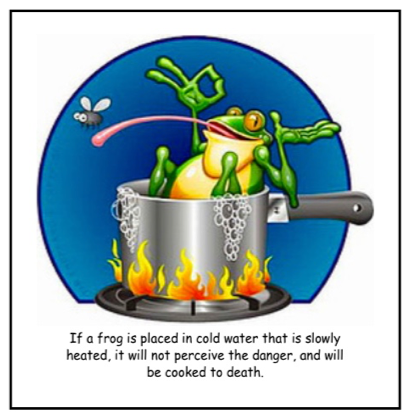Like the frog in the pot
- Rodolfo
- Nov 8, 2019
- 2 min read
Updated: Nov 30, 2019

It is well known that emissions of carbon dioxide (CO2), originating mainly from burning oil and coal, contribute enormously to the so-called greenhouse effect. About 32 mega tonnes of CO2 are emitted globally each year, which nowadays account to an accumulation of approx. 410 ppm of CO2 in the atmosphere. However, due to its increase in the atmosphere during the last two and a half centuries, it has been estimated that by 2100, atmospheric CO2 concentrations could reach approximately 1150 ppm, resulting in a global temperature increase about 5.5 °C [1] … It looks no so much, eh? However, such minor increase of temperature will have harmful effect on water and food availability, human health, ecosystem, coastlines and biodiversity. Therefore, if we are not able to perceive the danger of this situation, we will not be able to react on time… as the frog that is slowly cooked to death once the water is heated.

Today, there is a worldwide concern about such drastic implications and, governments have made commitment to reduce their greenhouse gas emissions. The EU has committed to reduce its greenhouse gas emissions by 80-95% by 2050, and it is in line with the Paris Agreement objective to keep temperature increase to well below 2°C, and pursue efforts to keep it to 1.5°C. In fact, countries like Sweden, Norway, Netherlands, Denmark, Finland, Italy, UK and Ireland, have implemented regulations in the form of CO2 taxes. Despite of these efforts, it is estimated that the emissions of CO2 can only be reduced up to 30% by reducing the amount of carbon energy sources and the use of non-fosil energies. Therefore, wherever is the way to have under control the greenhouse effect, it is essential to concentrate our efforts on the reduction of both the emissions and the atmospheric CO2 level.






Comments